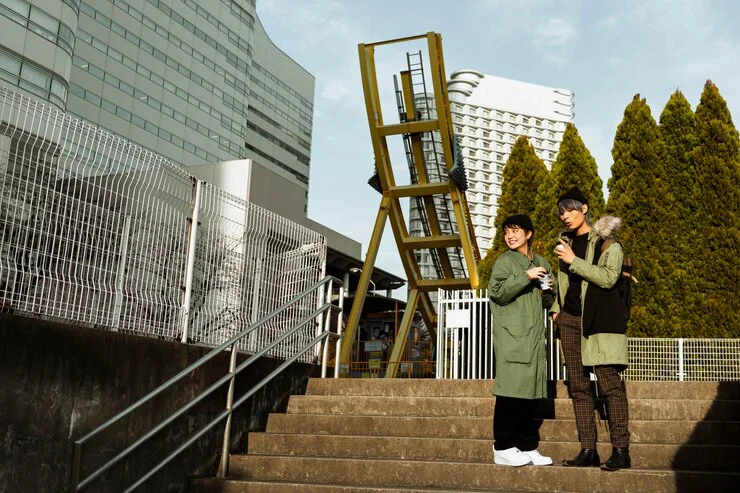The progressive evolution of urban spaces has necessitated a paradigm shift in how cities manage their electrical infrastructure. One of the defining trends that has emerged as crucial in future-proofing cities against environmental adversities and aesthetic considerations is the transition to underground wiring. This move towards burying electrical utilities has become imperative for modern urban planning, enhancing cityscapes in terms of safety, reliability, and design.
Understanding the Drive for Underground Wiring
The push towards underground wiring has been a response to multiple catalysts. Firstly, the visual clutter generated by overhead wires has been a longstanding concern for urban citizens and planners alike. Additionally, with the increased frequency of severe weather events attributed to climate change, overhead wiring systems have frequently become the Achilles’ heel of city infrastructure, leading to widespread power outages. This has necessitated a rethinking of traditional electrical setups.
Furthermore, underground utilities are less prone to disruptions caused by external factors such as wildlife, falling trees, or vehicular accidents. With such benefits in view, many city planners are advocating for a systematic overhaul of existing infrastructure to better serve the needs of an evolving population.
The Benefits of Underground Electrical Systems
One of the most compelling arguments for underground wiring is its capacity to drastically reduce the risk of electrical fires and blackouts caused by infrastructure damage. By placing wiring systems below ground, the electrical grid is shielded from the majority of natural and human-made risks that affect overhead lines. This directly translates to decreased disaster management costs and minimal interruption in power supply during crises.
In addition to enhanced protective measures, the aesthetic advancement that underground wiring provides cannot be overstated. Removing the web of wires from the urban skyline restores architectural integrity and opens up avenues for the beautification of city streets and communal spaces, offering clear vistas and unobstructed panoramic views.
Another significant benefit comes in the form of increased real estate value. Neighbourhoods with underground utilities often experience a rise in property prices, attributed to the improved visual appeal and the perception of a safer, more reliable electrical supply.
The Challenges that Accompany Underground Wiring
Despite the benefits, the deployment of underground wiring does not come without challenges. The initial expense of installing underground electrical systems is considerable, involving substantial investment in excavation, cabling, and specialised labour. This significant outlay can be a barrier for many municipalities, particularly when attempting to retrofit existing urban centres with underground systems.
Maintenance and repair of underground systems also present unique complexities. Unlike overhead lines, which are easily accessible for repairs, technicians must excavate to reach underground cables. This can amplify the time and expense required for maintenance operations, although the need for such interventions is markedly less frequent due to the protective nature of underground installation.
Moreover, there is the technological challenge of ensuring that the infrastructure is designed to adapt to future power demands and technologies. Ensuring that underground systems are scalable and can accommodate advancements in power transmission is vital for their long-term success.
The Role of Stakeholder Collaboration in Transitioning to Underground Wiring
Collaboration between various stakeholders, including government bodies, utility companies, urban developers, and residents, is fundamental in successfully implementing an underground wiring project. Costs associated with the transition can be mitigated through a shared investment approach, where the financial burden is distributed among the benefactors of the upgraded infrastructure.
Furthermore, for the process of transition to be smooth, transparent communication between stakeholders is key. In-depth consultations, feasibility studies, and careful planning can prevent the escalation of costs and ensure that the projects deliver their intended benefits without causing significant disruption to city dwellers.
Emerging Trends in Subterranean Electrical Systems
Emerging trends focus on integrating flexibility and scalability into subterranean electrical systems, considering the advent of renewable energy sources and smart grid technologies. Modern underground systems are being designed with the foresight to accommodate future developments such as increased electric vehicle charging requirements and the integration of distributed energy resources like solar and wind power.
Additionally, innovations in materials and construction methods are being harnessed to reduce the costs of installation and increase the longevity and durability of underground wiring. Newer insulation materials, for instance, are contributing to enhanced safety and efficiency, ensuring the underground cables can operate optimally for extended periods.
Conclusion
The transition to underground electrical systems is a key component in planning the cities of tomorrow. Beyond the obvious benefits relating to aesthetics and reliability, underground wiring offers a solid foundation that supports the integration of novel technologies and sustainable practices, essential for prosperous and resilient urban development. Whist cities strive to become smarter and more efficient, the shift to an underground electrical infrastructure provides the underpinnings for these advances, ensuring the vitality and adaptability of cities in an uncertain future.
In summary, the quest for enhanced cityscapes, bolstered by underground wiring, is not just a matter of convenience or aesthetic preference. It is an essential strategic move towards securing the economic vitality, safety, and appeal of urban environments in the face of burgeoning urban populations and the unpredictable nature of climate change.
The cities that embrace this shift will likely stand as testimonies to the vision and foresight of their planners, serving their inhabitants with an enviable blend of functionality and form, and setting a benchmark for urban development in the modern age.







